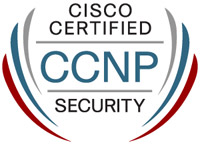Course Content
The following topics are general guidelines for the content likely to be included on the exam. However, other related topics may also appear on any specific delivery of the exam. To better reflect the contents of the exam and for clarity purposes, the guidelines below may change at any time without notice.
30% 1.0 Deployment
1.1 Implement NGFW modes
1.1.a Routed mode
1.1.b Transparent mode
1.2 Implement NGIPS modes
1.2.a Passive
1.2.b Inline
1.3 Implement high availability options
1.3.a Link redundancy
1.3.b Active/standby failover
1.3.c Multi-instance
1.4 Describe IRB configurations
30% 2.0 Configuration
2.1 Configure system settings in Cisco Firepower Management Center
2.2 Configure these policies in Cisco Firepower Management Center
2.2.a Access control
2.2.b Intrusion
2.2.c Malware and file
2.2.d DNS
2.2.e Identity
2.2.f SSL
2.2.g Prefilter
2.3 Configure these features using Cisco Firepower Management Center
2.3.a Network discovery
2.3.b Application detectors (Open AppID)
2.3.c Correlation
2.3.d Actions
2.4 Configure objects using Firepower Management Center
2.4.a Object Management
2.4.b Intrusion Rules
2.5 Configure devices using Firepower Management Center
2.5.a Device Management
2.5.b NAT
2.5.c VPN
2.5.d QoS
2.5.e Platform Settings
2.5.f Certificates
25% 3.0 Management and Troubleshooting
3.1 Troubleshoot with FMC CLI and GUI
3.2 Configure dashboards and reporting in FMC
3.3 Troubleshoot using packet capture procedures
3.4 Analyze risk and standard reports
15% 4.0 Integration
4.1 Configure Cisco AMP for Networks in Firepower Management Center
4.2 Configure Cisco AMP for Endpoints in Firepower Management Center
4.3 Implement Threat Intelligence Director for third-party security intelligence feeds
4.4 Describe using Cisco Threat Response for security investigations
4.5 Describe Cisco FMC PxGrid Integration with Cisco Identify Services Engine (ISE)
4.6 Describe Rapid Threat Containment (RTC) functionality within Firepower Management Center

